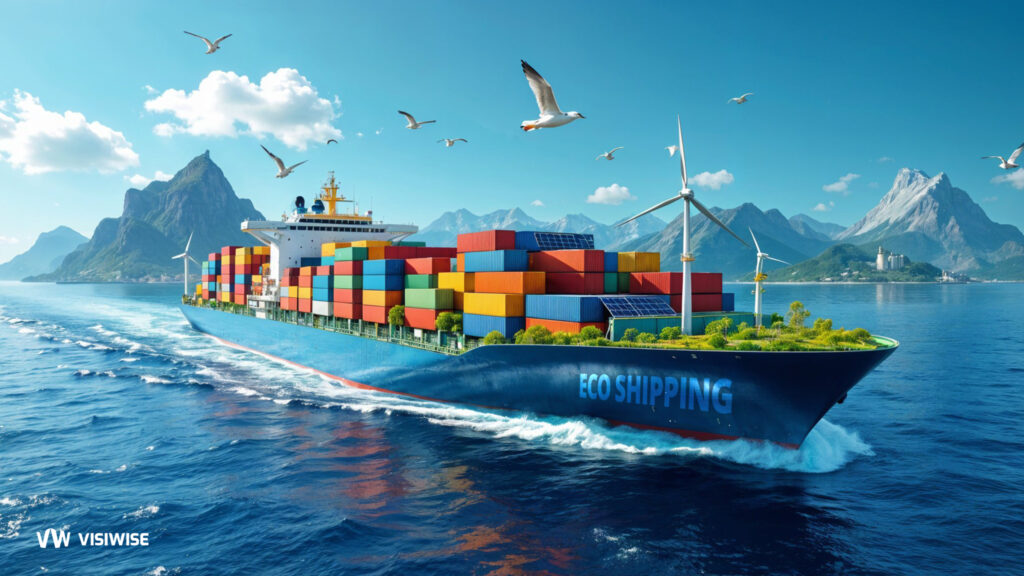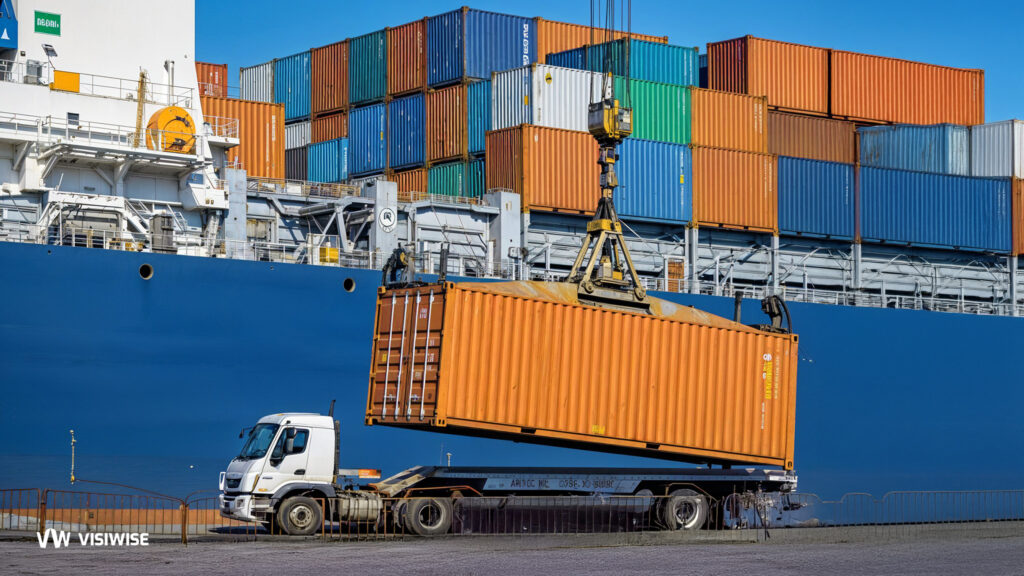Cold chain management encompasses overseeing the entirety of the cold chain, which includes goods in transit, under processing, in storage, and on display.
Temperature-sensitive products heavily rely on cold chain management to ensure product efficacy, safety, and compliance with relevant regulatory standards. This includes pharmaceuticals, vaccines, biologics, lab samples, diagnostic tools, chemicals, as well as food and beverages.
Within the supply chain, cold chain management serves as a critical component for regulating temperature ranges and maintaining air quality, including carbon dioxide levels, humidity, and oxygen concentrations.
Failure or interruption in the cold chain management process during shipping, processing, storage, or display can result in product deterioration, loss of value, and financial repercussions. All stakeholders involved in the supply chain, from producers to shippers to end customers, rely on maintaining the appropriate temperature and product environment.
To ensure the integrity of the cold chain, the latest advancements in thermal packaging technology are utilized to monitor, maintain, and adjust the cold chain from production through delivery and display.
What is a Cold Chain?
A continuous maintenance of specific thermal conditions throughout the production, packaging, and transportation of temperature-sensitive goods is referred to as a "cold chain."
Think of the cold chain as a distribution network responsible for temperature regulation. Consistent and unbroken refrigeration across manufacturing, production, packaging, transportation, and distribution stages is vital for the efficacy of the cold chain.
Understanding and managing the shipping environment, packaging design, duration of shipments, and critical checkpoints throughout the process are essential for preserving the integrity of the cold chain.
The Origins of Cold Chain Management
The roots of cold chain management trace back to the late 18th century when British fishermen began using ice to preserve their catch in 1797. However, it was not until the 20th century that significant advancements in refrigeration technology revolutionized the transportation and storage of perishable goods.
In 1938, American inventor Frederick Jones developed the first mobile air-cooling system, marking a significant milestone in cold chain management. These refrigeration units played a pivotal role during World War II, ensuring the safe transportation and storage of essential supplies such as food, medication, and blood in military hospitals and on the battlefield.
The passage of the Interstate Highway Act in 1956 further fueled the growth of the cold chain industry. This landmark legislation led to the construction of a vast network of highways across the United States, facilitating the efficient transportation of perishable goods over long distances.
Together, these historical developments laid the foundation for modern cold chain management, enabling the safe and reliable distribution of temperature-sensitive products around the world.
What goods are typically transported within a cold chain?
Cold chains have evolved to address the need for temperature-controlled logistics, especially for transporting perishable goods over long distances. While initially focused on food items, modern cold chains now cater to a diverse range of sensitive cargo across various industries and climates.
Products commonly transported through cold chains include:
1. Food & Beverages:
– High-end foodstuffs
– Fruits & vegetables
– Meat & seafood
– Poultry & dairy
– Processed & ready-to-eat food
2. Medical Goods:
– Vaccines
– Pharmaceuticals & healthcare products
– Biologics (tissue samples, live cultures, etc., for medical research)
3. Temperature-sensitive Chemicals:
– Paint
– Volatile chemicals
4. Other Temperature-sensitive Items:
– Plants & flowers
– Synthetic products
– High-tech electronic/electrical components
– Photographic film
It’s important to note that not all cargo in a cold chain requires sub-zero temperatures. For instance, certain fruits and vegetables need to be kept warm during winter to maintain texture and longevity. Therefore, cold chain logistics, also known as temperature-controlled transport or cool chain logistics, involves maintaining various temperature and ambient conditions based on the specific requirements of the cargo being transported.
To effectively manage cold chain logistics, an advanced visibility platform is essential. This platform should integrate with ERPs (Enterprise Resource Planning systems) and provide actionable data to ensure the integrity of temperature-sensitive cargo throughout the transportation process.
Ensuring Temperature Compliance: Standards in Cold Chain Logistics
Temperature-controlled transport is generally categorized into the following temperature ranges:
- Deep Freeze (-28 °C to -30 °C): Used for seafood and meat exports.
- Frozen (-16 °C to -20 °C): Suitable for meat and certain produce.
- Chill (2 °C to 4 °C): Ideal for fruit, vegetables, fresh meat, and some dairy.
- Pharma (2 °C to 8 °C): Reserved for medicines and vaccines.
- Cool-chain (12 °C to 14 °C): Suitable for fresh produce, processed food, and over-the-counter drugs.
Advancements in techniques and technologies have made it feasible to maintain precise temperature control during transport, addressing challenges faced by F&B companies due to spoilage in cold chains. These temperature-controlled transport options empower businesses to establish global supply chains for perishable goods with confidence and flexibility.
Components of Cold Chain Logistics Operations
The cold chain comprises four essential components, all integral to ensuring the safe transport and storage of cold chain products:
- Temperature-Controlled Storage: Specialized refrigerated facilities designed to maintain specific temperature conditions for storing cold chain cargo before shipment to distribution centers or final destinations.
- Temperature-Controlled Transport: Customized insulated cold containers utilized for transporting goods via air, water, road, or rail, ensuring temperature integrity throughout the journey.
- Trained Personnel: Knowledgeable and skilled individuals familiar with handling the complexities of temperature-sensitive cargo, ensuring proper handling and adherence to cold chain protocols.
- Efficient Operational and Management Procedures: Robust processes and protocols in place to minimize risks during daily operations and effectively manage unforeseen incidents, maintaining product integrity and safety.
Cold chain warehousing and distribution management are often outsourced to third-party logistics operators (3PLs) who offer customizable logistics services tailored to specific requirements and adaptable to changing needs. Leveraging their expertise in cold chain management, 3PLs operate at lower costs compared to in-house operations, providing cost-effective solutions for their clients.
Distinguishing Between Cold Chain and Supply Chain
Differentiating Cold Chains from Regular Supply Chains:
1. Cargo Sensitivity: Cold chain shipments are highly sensitive to thermal stress, with tolerance levels often just a few degrees, compared to regular supply chain cargo.
2. Logistics Hardware: Cold chain logistics require more customized and tailored logistics hardware to meet the specific needs of temperature-sensitive products.
3. Packaging: Cold chain packaging is more complex, as it must insulate and contain sensitive products along with volatile coolants to maintain temperature integrity.
4. Costs: Cold chains incur higher expenses in terms of operational overheads and potential disruptions compared to regular supply chains.
5. Cargo Handling: Cold chain cargo requires special care and handling in temperature-controlled environments throughout the transportation process.
6. Regulatory Compliance: Cold chain logistics are subject to stringent regulatory requirements that vary from region to region, adding complexity to operations.
7. Customs Procedures: Cold chain shipments, especially those involving food or medicines, require more complex customs procedures due to regulatory considerations for temperature-sensitive products and refrigerants.
8. Operational Complexities: Cold chain logistics operations are inherently more challenging due to factors such as the nature of shipments, regulatory requirements, and potential hardware failures, necessitating careful management.
Current Cold Chain Technologies in Use
While the concept of managing temperature-sensitive products has existed for quite some time, the technologies involved have undergone significant evolution in recent decades.
The technologies used in cold chain transport can be grouped into the following broad categories.
- Cold Chain Warehouse Storage Technologies:
- Deep Freezer (DF)
- Walk-in Freezer (WIF)
- Walk-in Coolers (WIC)
- Cold Chain Transit Storage Technologies:
- Reefers: Specialized trucks or containers equipped with active cooling systems, powered by batteries or other refrigeration methods, suitable for transporting bulk cargo via road, rail, or ocean.
- Air Freight Containers: Containers designed to meet airline freight constraints and compliance standards, primarily used for expedited cold chain shipments.
- Ice Lined Refrigerators (ILR): Heavy-duty insulated containers lined with coolants, employing passive cooling mechanisms that rely on coolants to maintain low temperatures.
Temperature Control Methods
Passive Cooling:
- Phase Change Materials (PCM)
- Evaporative Cooling
- Cooling Agents such as ice, dry ice, gel packs, liquid nitrogen, etc. utilized as dunnage
Active Cooling:
- Reefers: Portable powered refrigeration units powered by fuel or battery packs
- Absorption or Compression Refrigerators/Freezers: Utilized in situations where a power supply is unavailable or unreliable
Cold Chain Packaging Technologies:
Cold Chain Packaging Technologies Include:
- Insulators: Thermal blankets, specialized foam, cold insulation bags, and Vacuum Insulated Panels (VIP)
- “Dry” or “Wet” Shippers: Specially designed vessels with space for liquid nitrogen
- Cryoboxes or Polystyrene Containers: Special cold box or cool box containers that can be customized for specific cargo, usually made from Expanded Polystyrene (EPS) or Expanded Polyurethane (EPU)
- Active Containers: Highly compact portable reefers
Key Elements of Cold Chain Passive Packaging Systems:
- Rigid outer casing
- Vacuum insulated thermal panels
- Temperature control medium or Phase Change Materials (PCM)
The Importance of Cold Chain Logistics in Global Food Security and Business Advantages
Cold chain logistics play a crucial role in enhancing global food security by facilitating the transportation of nutritious food and vital medicines to even the most remote regions worldwide. Moreover, it fosters advancements in medical and scientific research through the reverse cold chain process.
In the realm of modern business, effective cold chain management offers numerous advantages to enterprises:
1. Reduced Product Spoilage: Efficient cold chains result in decreased product spoilage, leading to lower inventory replacement costs and increased revenue per shipment.
2. Minimized Risk of Damaged Products: Well-maintained cold chains lower the likelihood of damaged products reaching customers, thereby mitigating legal and PR liabilities.
3. Enhanced Product Quality and Consistency: Maintaining optimal temperature conditions ensures better product quality and consistency, resulting in improved customer service and satisfaction.
4. Expanded Transport Opportunities: Cold chain logistics enable a broader range of transportation options, facilitating exports and creating new market opportunities.
5. Regulatory Compliance: Compliance with stringent regulations, particularly in the transportation of food and medical products, is bolstered by efficient cold chain logistics.
For franchisors and retail service providers aiming to expand their global networks and capitalize on growth opportunities in emerging markets, efficient cold chain logistics are essential. With over 70% of the world’s population residing in developing or emerging economies, tapping into these markets presents significant business prospects.
Optimizing Cold Chain Logistics
Enterprising companies are leveraging modern temperature-controlled logistics to transport larger volumes of more sensitive goods across greater distances. However, this advancement also amplifies risks associated with cold chain management.
To start optimizing cold chain logistics, businesses should prioritize:
- Implementing robust temperature monitoring and control systems.
- Investing in state-of-the-art cold chain packaging and transportation technologies.
- Ensuring compliance with evolving regulatory standards.
- Collaborating with reliable logistics partners with expertise in cold chain management.
By addressing these key areas, companies can optimize their cold chain logistics and capitalize on the vast opportunities presented by global markets while mitigating associated risks.
Unique Risks in Cold Chain Logistics
- Transport Issues: Disruptions in electrical supply for reefers, coolant/container failure, poor coolant circulation, and exposure to the elements during transport pose significant risks.
- Warehouse Storage Issues: Power outages, poor insulation, and non-uniform cooling in warehouse storage facilities can compromise product integrity.
- Handling Incidents: Improper loading/unloading operations, mishandling that damages packaging or products, and exposure during transfers or last-mile delivery increase the risk of product spoilage.
- Insufficient Cold Chain Infrastructure: Inadequate cold storage facilities and essential cold chain components in certain geographies contribute to capacity and infrastructure challenges.
Major Cold Chain Risks
- Higher Costs: Cold chain logistics incur higher costs due to specialized equipment, stringent temperature control requirements, and increased operational complexity.
- Lack of Uniform Global Practices: The absence of standardized practices across regions complicates cold chain logistics management.
- Customs, Legal, and Compliance Issues: Complex regulatory requirements and compliance standards in different jurisdictions pose challenges for cold chain operations.
- Environmental Effects: Cold chain logistics contribute to environmental impacts, including energy consumption, carbon emissions, and waste generation.
- Supplier-Related Risks: Dependency on multiple suppliers for temperature-sensitive goods increases the risk of supply chain disruptions.
- Cold Chain Delivery Issues: Packaging, hardware malfunctions, vehicle breakdowns, and other delivery-related issues can compromise product quality and integrity.
- Human Error: Mistakes in handling, monitoring, or managing temperature-sensitive products can lead to costly errors and product losses.
- Security Risks: Theft, tampering, and unauthorized access to temperature-sensitive cargo pose security risks in cold chain logistics.
- Retailer Risks: Challenges in meeting retailer requirements, including packaging specifications and delivery schedules, can impact supply chain performance.
- Consumer Demand Risk (Bullwhip Effect): Fluctuations in consumer demand can amplify inventory and forecasting challenges, leading to excess inventory and reduced forecast accuracy in the cold chain.
The Bullwhip Effect in Cold Chain Logistics
The Bullwhip effect is a phenomenon observed in supply chain management where small fluctuations in consumer demand lead to amplified variations in inventory levels and orders along the supply chain. In the context of cold chain logistics, the Bullwhip effect can have particularly severe consequences due to the heightened sensitivity of temperature-sensitive goods to delays or disturbances.
Analogous to the motion of a bullwhip, wherein a small flick of the handle results in a significant wave-like motion along the length of the whip, the Bullwhip effect magnifies demand fluctuations as they propagate upstream through the supply chain.
This phenomenon impacts inventory management at every level of the cold chain, from ingredient manufacturers to regional warehouses and stores. As demand fluctuations are transmitted upstream, they become increasingly exaggerated at each successive level, leading to inventory imbalances and overstocking of goods and pallets.
Moreover, the Bullwhip effect contributes to increased uncertainty and reduced forecast accuracy in cold chain logistics. The amplification of demand fluctuations results in distorted demand signals, making it challenging for supply chain participants to accurately forecast demand and adjust inventory levels accordingly.
Ultimately, the Bullwhip effect in cold chain logistics can result in unnecessarily high inventory volumes, increased costs, and operational inefficiencies. Mitigating this effect requires proactive measures such as improving communication and collaboration among supply chain partners, implementing demand forecasting tools, and adopting inventory management strategies to reduce variability and enhance supply chain responsiveness.
Current Trends Driving Evolution in Cold Chain Risk Management Strategies
Globalization and Market Expansion: The globalization of trade has created new market opportunities, prompting cold chain stakeholders to reassess risk management strategies to address the complexities of international supply chains.
Stricter Regulatory Standards: Increasingly stringent regulations, particularly for food and medical shipments, are driving the need for enhanced cold chain risk management practices to ensure compliance and mitigate regulatory risks.
Higher Product Sensitivity: The growing prevalence of medical and high-end products with lower tolerance for temperature excursions necessitates improved risk management approaches to safeguard product integrity throughout the supply chain.
Advancements in Technology: The availability of advanced technologies for the storage and transportation of temperature-sensitive goods is revolutionizing cold chain risk management, offering greater visibility and control over critical parameters.
Cost Fluctuations and Transportation Alternatives: Rising costs, especially in air freight, are prompting shippers to explore alternative modes of transportation such as ocean liners or surface transport, supported by advancements in technology to enhance reliability and efficiency.
In response to these trends, enterprises and third-party logistics providers are increasingly focusing on cold chain risk assessment and management. Enhanced visibility through tracking technologies plays a pivotal role in identifying and mitigating risks associated with temperature excursions and other operational challenges in cold chain logistics.
That’s where tracking technologies come in.
Navigating Cold Chain Logistics Challenges with Visiwise Real-Time Visibility
The Evolving Landscape of Cold Chain Logistics
As globalization reshapes the logistics industry, cold chain logistics face mounting pressure to uphold packaging integrity and product quality. The demand for temperature-sensitive goods across global markets underscores the importance of efficient and reliable cold chain operations.
The Role of Real-Time Visibility Solutions
Real-time visibility solutions have emerged as indispensable tools for optimizing cold chain operations. These solutions offer comprehensive monitoring capabilities, empowering logistics managers to track the location, and condition of shipments in real-time.
Introducing Visiwise: A Leading Visibility Platform
Visiwise stands out as a leading real-time visibility platform in the cold chain industry. With its advanced sensors and data analytics, Visiwise provides unparalleled insights into temperature-sensitive cargo, enabling proactive management and risk mitigation.
Enhancing Operational Efficiency with Visiwise
Visiwise offers customizable alerts and notifications, allowing logistics teams to respond swiftly to deviations from optimal conditions. By providing actionable insights, Visiwise enhances operational efficiency and ensures product integrity throughout the cold chain.
The Future of Cold Chain Logistics with Visiwise
As the cold chain industry continues to evolve, Visiwise remains at the forefront of innovation, driving efficiency, reliability, and compliance in temperature-sensitive transportation. With Visiwise, cold chain logistics providers can navigate challenges with confidence and agility in an ever-changing global landscape.
Utilizing IoT-Enabled Solutions for Cold Chain Monitoring:
Driven by the growing demand for data-driven decision-making, advancements in cold chain monitoring solutions continue to evolve, offering a range of improved features:
- Real-Time Communication: Continuous communication capabilities provide instant updates and alerts regarding temperature fluctuations, ensuring timely intervention to prevent product spoilage.
- Comprehensive Data Collection: In addition to temperature updates, solutions now incorporate additional data such as shipment location, condition status, and external factors like weather and traffic conditions, offering a holistic view of the supply chain.
- Portable and Energy-Efficient Devices: The latest monitoring devices are smaller, portable, and energy-efficient, facilitating their use in multi-modal shipments and enabling remote management.
- Enhanced Reporting and Dashboards: User-friendly reports, real-time dashboards, and contextual information make cold chain monitoring and management more accessible and intuitive for stakeholders.
- Cloud-Based Predictive Analytics: Cloud-based platforms leverage real-time predictive analytics to identify risks and opportunities for improving efficiency, empowering proactive decision-making.
- Real-Time Contingency Management: Utilizing live monitoring data, solutions enable real-time contingency and crisis management, enabling proactive responses to disruptions and minimizing their impact on the cold chain.
The Contrasts Among Temperature Data Loggers, Bluetooth Temperature Sensors, and IoT:
Cold chain risk management strategies are evolving to harness the potential of these advancements, capitalizing on the capabilities of automation, machine learning, and predictive analytics facilitated by such systems.
The amalgamation of sturdy monitoring devices, uninterrupted connectivity, and analytical tools that facilitate data-driven enhancements to cold chain logistics operations epitomizes the apex of cold chain monitoring and management systems.
Implementing IoT for cold chain monitoring holds the promise of reducing supply chain costs while simultaneously enhancing efficiency.
Wrap Up
the integration of visibility platforms alongside temperature data loggers, Bluetooth temperature sensors, and IoT technologies represents a comprehensive approach to cold chain management. These advancements enable stakeholders to harness the power of automation, machine learning, and predictive analytics to enhance operational efficiency and minimize risks associated with temperature-sensitive products. The hybrid combination of robust monitoring devices, constant connectivity, advanced analytics, and visibility platforms epitomizes the pinnacle of cold chain monitoring and management systems. By embracing these technologies, businesses can optimize their cold chain logistics operations, reduce supply chain costs, and ensure the integrity and safety of temperature-sensitive shipments throughout the entire supply chain while simultaneously improving visibility and transparency across all stages of the process.



